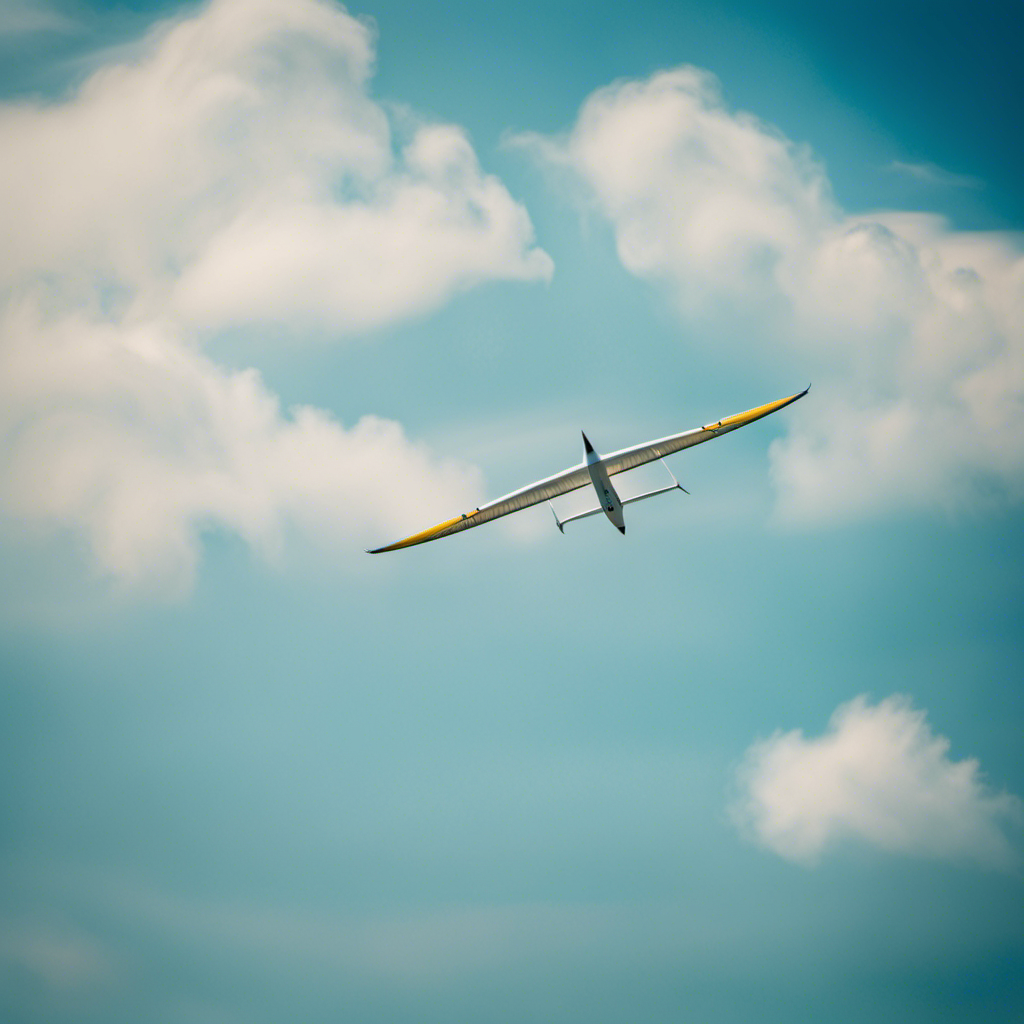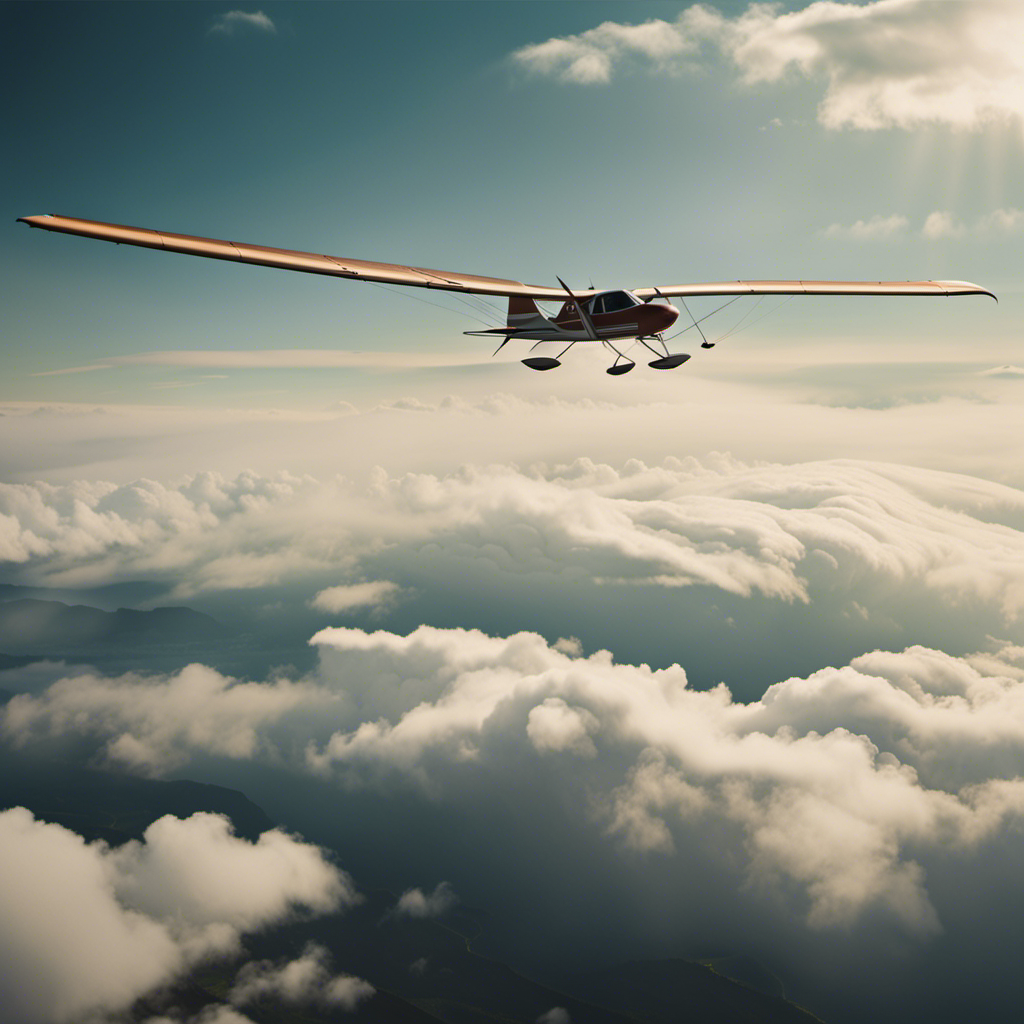As a paraglider pilot, I often find myself contemplating whether paragliding is safer than hang gliding.
Picture yourself soaring through the sky, the wind rushing past you, the sense of freedom and adrenaline coursing through your veins.
But safety is paramount when it comes to these exhilarating sports.
In this article, we will delve into the world of paragliding and hang gliding, exploring the factors that contribute to their safety, from equipment and training to personal considerations and expert opinions.
Key Takeaways
- Paragliders have better maneuverability and longer airborne time, while hang gliders offer greater speed and glide efficiency.
- Paragliding equipment is lightweight and portable, while hang gliding requires more skill and training to operate.
- Compliance with regulations is crucial for paragliding safety.
- Proper training and certification are necessary before taking flight.
Understanding Paragliding and Hang Gliding
Paragliding is generally considered to be safer than hang gliding. Both activities involve flying through the air without an engine, but there are significant differences in their flight techniques.
Paragliding uses a paraglider, which is a flexible wing made of fabric, while hang gliding uses a rigid wing made of aluminum or composite materials.
In paragliding, pilots launch by running off a slope or being towed into the air, whereas hang gliders typically launch from a higher point and foot-launch.
Paragliders have better maneuverability and can stay airborne for longer periods, while hang gliders offer greater speed and glide efficiency.
One advantage of paragliding is its portability, as the equipment is lightweight and easy to transport. However, paragliders are more susceptible to turbulence and require more active piloting.
Hang gliders, on the other hand, require more skill and training to operate.
In terms of safety considerations, it is important to understand the unique risks associated with each activity and to always prioritize proper training, equipment maintenance, and weather conditions.
Safety Considerations
When considering safety, it is important to take into account the differences in flight characteristics between paragliding and hang gliding. Each type of aircraft has its own set of safety regulations and precautions that need to be followed to ensure a safe flying experience. Here are some key points to consider:
-
Paragliding regulations: Each country has its own set of regulations governing paragliding. It is important to familiarize yourself with these regulations, including licensing requirements, flight restrictions, and safety guidelines.
-
Safety precautions: Paragliding involves certain risks, so it is crucial to take necessary safety precautions. This includes proper training, understanding weather conditions, using appropriate safety gear, and conducting regular equipment checks.
-
Flight planning: Before taking off, it is essential to plan your flight carefully. This involves assessing the weather conditions, choosing a suitable launch site, and ensuring you have the necessary skills and experience for the planned flight.
Considering these factors will help you make informed decisions regarding your safety when participating in paragliding activities.
Moving on to the next section about equipment and gear, it is important to understand the role they play in ensuring a safe flight experience.
Equipment and Gear
To ensure a safe flight experience, it is important to understand the role of equipment and gear in paragliding. Paragliding gear consists of essential components such as a paraglider wing, harness, reserve parachute, and helmet. These items are specifically designed to provide stability, control, and protection during flight.
The paraglider wing is made up of durable materials with built-in air pockets that generate lift, allowing you to soar through the skies. The harness ensures a secure connection between the pilot and the wing, while the reserve parachute acts as a backup in case of emergencies.
On the other hand, hang gliding equipment includes a rigid-wing aircraft, harness, and helmet. Each piece of gear plays a crucial role in maintaining safety and control during flight. Understanding the functionality and importance of these equipment and gear is vital for a safe and enjoyable paragliding experience.
Moving on to training and certification…
Training and Certification
Before you can take flight, it’s important to undergo proper training and obtain certification. The effectiveness of training plays a crucial role in ensuring your safety and success as a paraglider or hang glider pilot.
To become certified, there are certain requirements that must be met, such as completing a specified number of training hours, demonstrating proficiency in flying techniques, and passing written and practical exams. The certification process helps to ensure that you have the necessary knowledge and skills to handle the challenges of flying.
Risk Factors and Accident Statistics
When discussing the risk factors and accident statistics in paragliding and hang gliding, it is important to consider the common injuries and accidents that occur in both sports.
In paragliding, common injuries include broken bones, sprains, and concussions, often resulting from hard landings or collisions with objects.
Hang gliding, on the other hand, is associated with injuries such as fractures, dislocations, and head trauma, mainly caused by crashes during takeoff or landing.
A comparative analysis of accident rates can provide valuable insights into the safety profiles of these two activities and help inform individuals about the potential risks involved.
Common Injuries and Accidents in Paragliding
Paragliding can result in common injuries and accidents, such as sprains and fractures. To ensure safety while paragliding, it is crucial to take certain precautions and follow safety measures. Here are three important safety measures to consider:
-
Proper training: Before taking flight, it is essential to undergo thorough training from a certified instructor. This training includes learning about equipment, weather conditions, and emergency procedures.
-
Equipment inspection: Regularly inspecting and maintaining your paragliding equipment is crucial to prevent accidents. Check for any signs of wear and tear, ensure proper harness and helmet fit, and always use certified equipment.
-
Weather conditions: Pay close attention to weather conditions before flying. Avoid flying during strong winds, thunderstorms, or unpredictable weather patterns. Always consult with local experts or instructors for accurate weather information.
By following these safety measures, paragliders can reduce the risk of accidents and injuries.
Transitioning into the subsequent section about ‘common injuries and accidents in hang gliding’, it is important to understand the similarities and differences in safety measures between the two sports.
Common Injuries and Accidents in Hang Gliding
Hang gliding can lead to various injuries and accidents, such as fractures or sprains. The risks involved should not be underestimated, despite the exhilarating and thrilling nature of the sport. Hang gliding injuries can occur due to factors like equipment failure, poor weather conditions, or pilot error. Common injuries include broken bones, dislocations, and ligament tears. Accidents can range from minor incidents to more severe ones requiring medical intervention.
To minimize the risk of injuries, hang gliders should prioritize safety by wearing protective gear and undergoing proper training. Understanding the common injuries and accidents in hang gliding is crucial for analyzing the comparative accident rates between hang gliding and paragliding.
Comparative Analysis of Accident Rates
To understand the comparative accident rates, you should review the data and statistics of both sports. When analyzing the risk factors and accident statistics of paragliding and hang gliding, several key points emerge:
- Equipment failure: Both sports carry a risk of equipment malfunction, such as a parachute or wing collapse.
- Pilot error: Accidents can occur due to poor decision-making, inadequate training, or errors in judgment.
- Environmental conditions: Weather conditions, such as strong winds or turbulence, can increase the chances of accidents.
By examining these risk factors and accident statistics, we can gain valuable insights into the safety of paragliding and hang gliding. However, it’s important to note that accident rates alone do not provide a complete picture.
Environmental factors also play a significant role in determining the safety of these sports.
Environmental Factors
Flying in adverse weather conditions can pose significant risks for both types of gliders. It is important to consider the impact of environmental factors on wildlife and local communities. Birds and other wildlife can be disturbed by gliders in their habitats, affecting their natural behaviors and breeding patterns. Gliders flying over residential areas can also cause noise pollution and privacy concerns for local communities.
These factors need to be taken into account when deciding where and when to fly, in order to minimize the negative impact on the environment and nearby people.
Moving on to personal factors, there are several aspects that can affect the safety and enjoyment of both paragliding and hang gliding experiences.
Personal Factors to Consider
When it comes to personal factors, you should consider your physical fitness and any medical conditions that may affect your ability to safely participate in gliding activities. Personal preferences also play a role in deciding between paragliding and hang gliding.
Paragliding requires less physical strength and stamina compared to hang gliding, making it a more accessible option for individuals who may not be as physically fit. However, if you prefer a more thrilling and adrenaline-pumping experience, hang gliding might be the better choice.
It is important to assess your own physical capabilities and preferences before making a decision. Taking into account these personal factors will help ensure a safer and more enjoyable experience in the world of gliding.
Speaking of safety, it is crucial to also consider insurance and liability coverage when participating in these activities.
Insurance and Liability Coverage
Considering insurance and liability coverage is crucial for ensuring a safe and worry-free experience in the world of gliding. When it comes to participating in gliding activities, it’s important to have the right insurance policies in place to protect yourself and others from potential risks and accidents.
Here are some key points to consider:
- Liability coverage: Having liability coverage is essential in case you cause damage to someone else’s property or injure someone while gliding.
- Insurance policies: Make sure you have comprehensive insurance coverage that includes both personal injury and property damage protection.
- Policy limits: Check the policy limits to ensure they are sufficient to cover any potential damages or injuries that may occur during gliding.
- Exclusions: Understand any exclusions in your insurance policy that may impact your coverage, such as certain risky maneuvers or activities.
- Additional coverage: Consider adding additional coverage options, such as medical payments coverage or an umbrella policy, to provide extra protection.
Having the right insurance and liability coverage will give you peace of mind and protect you financially in the event of any unforeseen accidents.
Now, let’s delve into the expert opinions and experiences in the next section.
Expert Opinions and Experiences
As someone who has a deep interest in paragliding and hang gliding, I believe it’s important to gather insights from experienced individuals in the field.
Conducting interviews with experienced paragliders and hang gliders can provide valuable information about the challenges, techniques, and safety measures involved in these activities.
Interviews with Experienced Paragliders
If you’ve interviewed experienced paragliders, you’ll find that they have valuable insights on the safety aspects of paragliding compared to hang gliding.
I had the opportunity to speak with a few seasoned paragliders who shared their thoughts on the matter. They emphasized that paragliding techniques have evolved over the years, making it a safer sport. One of the key factors they mentioned was the ability to control the wing and adjust the glider’s speed and direction.
They also highlighted the strict safety protocols followed during paragliding competitions, ensuring that pilots are well-prepared and equipped for any situation. Additionally, paragliders mentioned the importance of understanding weather conditions and utilizing advanced technology to make informed decisions while flying.
These interviews shed light on the unique safety advantages of paragliding.
Speaking with experienced hang gliders will provide further insights into the safety aspects of hang gliding.
Interviews with Experienced Hang Gliders
After gaining valuable insights from experienced paragliders, it is important to also consider the perspectives of experienced hang gliders.
Hang gliding, like paragliding, offers an exhilarating experience of soaring through the sky. However, it is essential to acknowledge the risks involved and the safety measures taken in hang gliding.
Hang gliders face similar risks as paragliders, such as sudden weather changes, equipment failure, and pilot error. Safety measures in hang gliding include thorough pre-flight checks, ongoing training, and adherence to established guidelines and regulations. Hang gliders also prioritize the use of safety equipment, such as helmets and harnesses, to mitigate potential injuries.
By understanding the risks and safety measures associated with hang gliding, we can make informed decisions about this thrilling aerial sport.
Now, let’s delve into the next section and explore the importance of learning from others’ experiences.
Learning from Others’ Experiences
By listening to the stories and insights of experienced hang gliders, you can gain valuable knowledge and learn from their experiences in the sky. Here are a few key takeaways from these interviews:
-
Learning from Mistakes: Hang gliders often share stories of their own mistakes and accidents. These firsthand accounts can help you understand the potential risks and pitfalls of the sport, allowing you to make better-informed decisions when you’re up in the air.
-
Safety Tips: Experienced hang gliders also provide valuable safety tips that can help you stay out of harm’s way. From proper equipment maintenance to weather conditions to be aware of, their advice can help you navigate the skies with confidence and reduce the likelihood of accidents.
-
Techniques and Strategies: By listening to seasoned hang gliders, you can learn about advanced techniques and strategies that can enhance your flying skills. From maximizing lift to improving maneuverability, their insights can help you become a better hang glider pilot.
As we conclude this section on learning from others’ experiences, let’s now delve into the final thoughts and conclusions of this discussion.
Conclusion and Final Thoughts
In conclusion, it’s clear that a paraglider is generally considered safer than a hang glider due to its slower speed and easier learning curve. Learning from others’ experiences and the importance of proper training are essential factors to consider when engaging in any type of flying activity. By studying the experiences of seasoned paragliders, one can gain valuable insights and avoid potential risks. It is crucial to understand that proper training plays a significant role in ensuring safety while paragliding. A well-structured training program will equip beginners with the necessary skills and knowledge to handle different situations and make informed decisions. The table below further illustrates the comparison between paragliding and hang gliding in terms of safety and training requirements.
| Aspect | Paragliding | Hang Gliding |
|---|---|---|
| Speed | Slower | Faster |
| Learning Curve | Easier | Steeper |
| Training Requirements | Moderate | Intensive |
Frequently Asked Questions
How much does paragliding or hang gliding equipment cost?
Paragliding equipment prices can range from $2,500 to $5,000, depending on the brand and features. Hang gliding gear costs generally start around $3,000 and can go up to $6,000 or more.
Are there any weight restrictions for paragliding or hang gliding?
Weight restrictions and safety considerations are crucial in both paragliding and hang gliding. Understanding the limits of the equipment and the pilot’s weight capacity ensures a safer and more enjoyable flying experience.
Can paragliding or hang gliding be done in any weather conditions?
Paragliding and hang gliding can be done in various weather conditions, but extreme weather poses risks. Strong winds, turbulence, and storms can make it unsafe. It is important to assess weather conditions and exercise caution for a safe flight.
How long does it take to become certified in paragliding or hang gliding?
How long does it take to become certified in paragliding or hang gliding? The certification process duration varies, but typically it involves extensive training and practice. To become certified, one must meet specific training requirements set by the governing bodies in each sport.
Are there any age restrictions for participating in paragliding or hang gliding?
Age restrictions vary depending on the country and organization. In some places, participants must be at least 16 years old, while in others there are no specific age limits. Safety regulations are in place to ensure the well-being of all participants.
Conclusion
In conclusion, after carefully examining the safety aspects of paragliding and hang gliding, it is evident that both sports carry their own unique risks.
While paragliding offers better maneuverability and easier landings, hang gliding provides a more stable and aerodynamic experience.
It is important to remember that accidents can happen in any sport, and proper training and equipment are crucial for minimizing risks.
As the saying goes, "Life is like a parachute; it works best when it’s open." So, embrace the thrill of flight, but always prioritize safety.
With a heart that soars as high as the skies, Aria, affectionately known as “Skylark,” is the driving force behind Soaring Skyways. Her journey into the gliding world began as a young dreamer gazing up at the soaring birds, yearning to experience the weightlessness and freedom they embodied. With years of experience both in the cockpit and behind the scenes, Aria’s commitment to the gliding community is unwavering.










